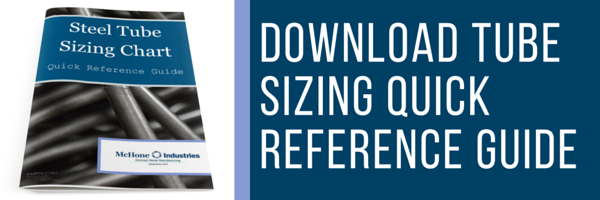
If you require tube bending for your product, material definitely matters. Certain materials are easier to bend, and there are different qualities that contribute to the final product.
We'll focus on steel and aluminum in this article, since those are the most common materials used for tubing. (To find out whether steel or aluminum is best for your application, check out this article.) If you have a question about other materials, feel free to contact us.
How Does Material Affect Tube Bending Quality?
1. Quality of Material
Do we even need to say it? Base quality of your chosen material, no matter the grade or size, will affect how it performs in a bending machine.
Here's what happens when you bend low-quality materials:
- Poor-quality bends
- Higher rates of scrap
- Higher chances of breakage, fracture, or other damage
If your application relies on a strong, sturdy metal tube, the last thing you want it to do is fail on the end user.
2. Category of Material
Both stainless steel and aluminum are divided into different grades. Certain grades perform better when welded, treated, or bent. Which grades produce the highest quality end product with tube bending?
Steel
- 304 - Excellent formability. High strength. High corrosion resistance.
- 316 - Excellent formability. High strength. Extremely high corrosion resistance.
- 444 - Good formability. Medium-high strength. Decent corrosion resistance.
Aluminum
- 3003 - best cold workability. Medium strength. High elongation.
- 5052 - great formability. High strength. High corrosion resistance for aluminum.
- 6061 - good for bending when annealed. Versatile. Heat treatable. No tight bends.
It's also possible to bend carbon and mild steels, though their physical properties (hardness, brittleness) make it more difficult.
3. Size of Material
Wall thickness affects chances of springback and ease of bending. Obviously, a thinner-walled metal is easier to bend. Thicker materials require more consideration to retain the bend and meet precise tolerances.
Material length also affects bend quality. Longer tubing is easier to stabilize and control springback. Especially with a rotary draw bender, you may need enough length on either side of the bend for the machine to grip. If your material needs to be especially short, another type of bending should be considered.
Choosing the Right Material for Tube Bending
Here are the main takeaways:
- Material quality affects final part quality and quality of the bend
- Certain metal grades are easier to bend and better for bending
- Material thickness and length affect ease of bending and tolerance adherence
Want to know more about tube fabrication or materials selection? Check out these related posts:


